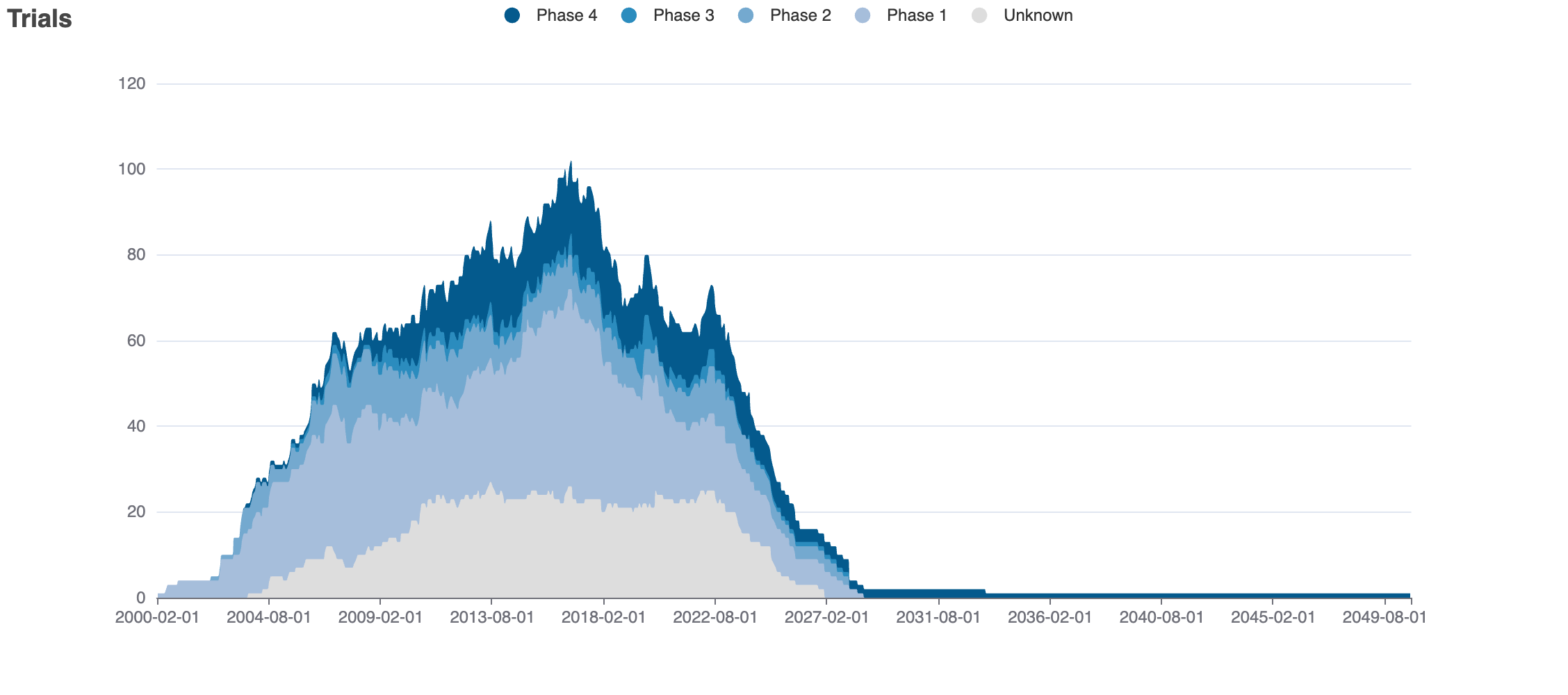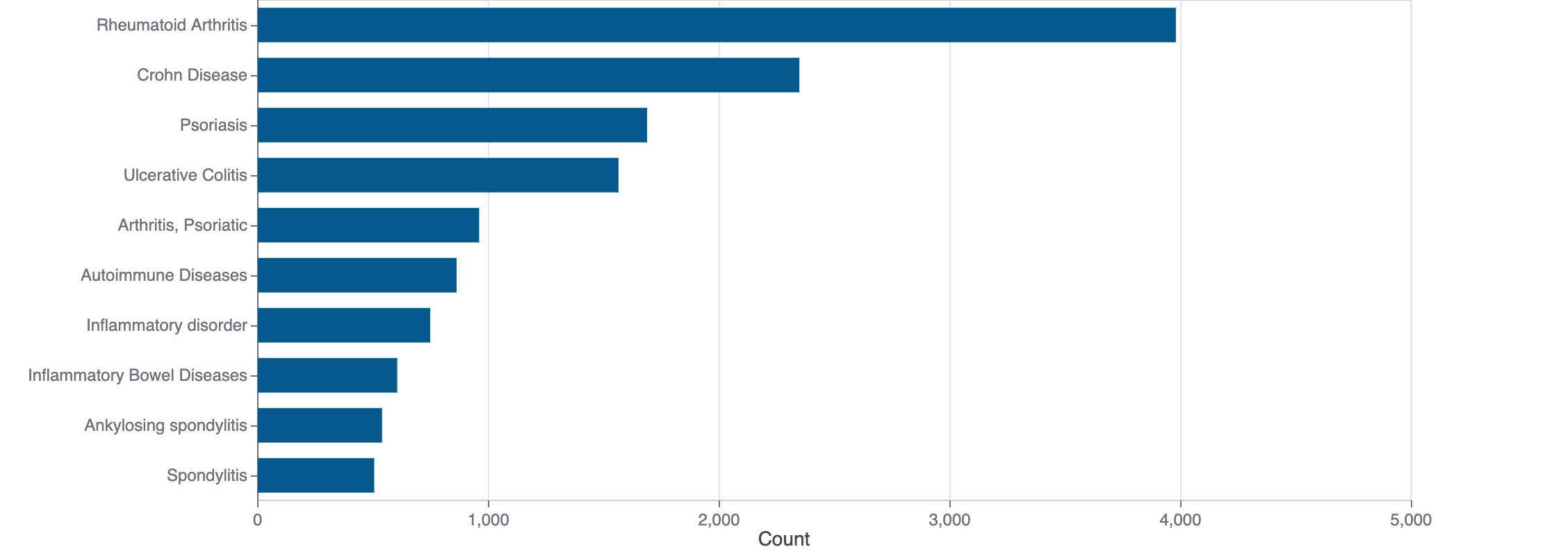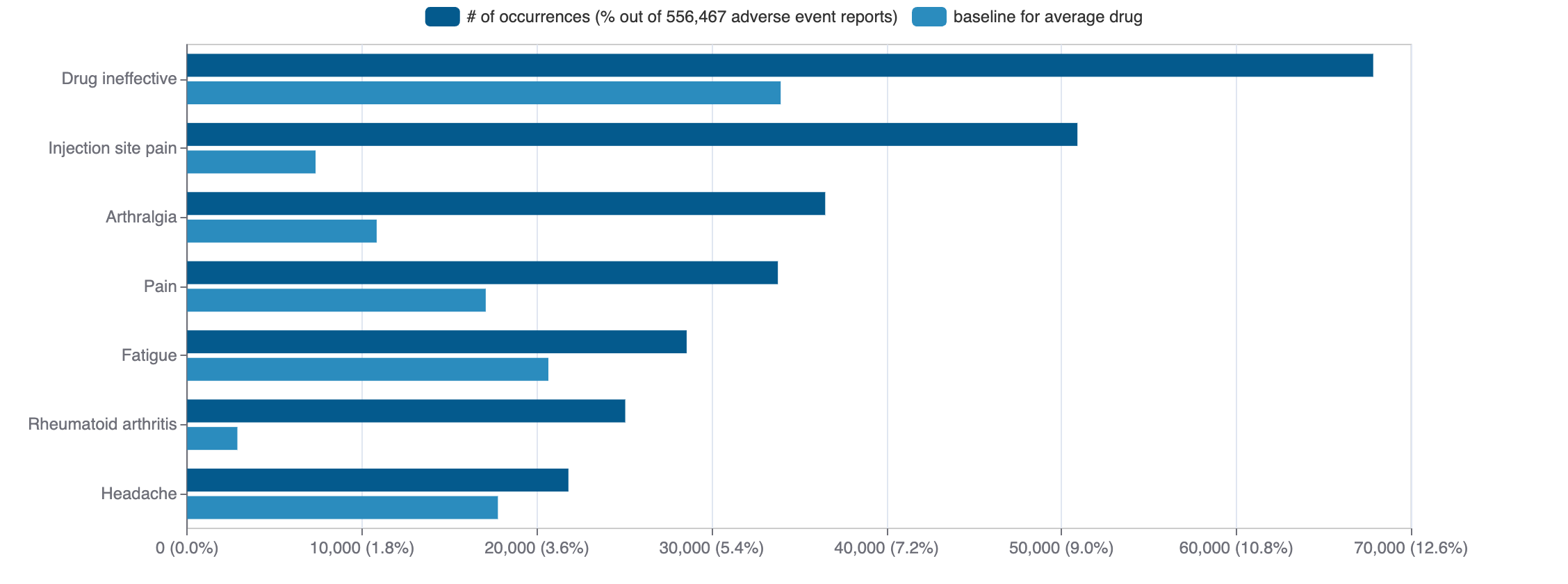Incobotulinumtoxina
Xeomin (incobotulinumtoxina) is an unknown pharmaceutical. Incobotulinumtoxina was first approved as Xeomin on 2010-07-30. It is used to treat blepharospasm, dystonia, fissure in ano, genetic skin diseases, and muscle rigidity amongst others in the USA.
Download report
Favorite
Events Timeline
Commercial
Clinical
Drug
Target
Variants
Financial
Trends
Safety
Events Timeline
5D
1M
3M
6M
YTD
1Y
2Y
5Y
Max
Events
FDA approval date
EMA approval date
Patent expiration date
Study first post date
Last update post date
Start date
Primary completion date
Completion date
Results first post date

Mock data
Subscribe for the real data
Subscribe for the real data
Commercial
Therapeutic Areas
Trade Name
FDA
EMA
Xeomin
Drug Products
FDA
EMA
Labels
FDA
EMA
Brand Name | Status | Last Update |
|---|---|---|
| xeomin | Biologic Licensing Application | 2024-12-19 |
Indications
FDA
EMA
Indication | Ontology | MeSH | ICD-10 |
|---|---|---|---|
| genetic skin diseases | — | D012873 | — |
| dystonia | — | D004421 | — |
| fissure in ano | — | D005401 | K60.2 |
| strabismus | — | D013285 | H50.2 |
| blepharospasm | — | D001764 | G24.5 |
| muscle rigidity | — | D009127 | — |
Agency Specific
FDA
EMA
No data
Patent Expiration
No data
ATC Codes
No data
HCPCS
No data
Clinical
Clinical Trials
213 clinical trials
View more details

Mock data
Subscribe for the real data
Subscribe for the real data
Indications Phases 4
Indication | MeSH | Ontology | ICD-10 | Ph 1 | Ph 2 | Ph 3 | Ph 4 | Other | Total |
|---|---|---|---|---|---|---|---|---|---|
| Stroke | D020521 | EFO_0000712 | I63.9 | — | — | 5 | 1 | — | 6 |
| Dystonic disorders | D020821 | — | G24 | — | — | 2 | 2 | 1 | 5 |
| Dystonia | D004421 | — | — | — | — | 2 | 2 | 1 | 5 |
| Torticollis | D014103 | — | F45.8 | — | — | 1 | 2 | 1 | 4 |
| Sleep bruxism | D020186 | — | G47.63 | — | — | — | 1 | — | 1 |
| Bruxism | D002012 | — | F45.8 | — | — | — | 1 | — | 1 |
Indications Phases 3
Indication | MeSH | Ontology | ICD-10 | Ph 1 | Ph 2 | Ph 3 | Ph 4 | Other | Total |
|---|---|---|---|---|---|---|---|---|---|
| Muscle spasticity | D009128 | — | — | — | 1 | 9 | — | — | 10 |
| Cerebral palsy | D002547 | — | G80 | — | 1 | 4 | — | — | 5 |
| Traumatic brain injuries | D000070642 | — | S06 | — | 1 | 3 | — | — | 4 |
| Brain injuries | D001930 | — | S06.9 | — | 1 | 3 | — | — | 4 |
| Blepharospasm | D001764 | — | G24.5 | — | 1 | 2 | — | 1 | 4 |
| Sialorrhea | D012798 | — | K11.7 | — | 1 | 2 | — | — | 3 |
| Parkinson disease | D010300 | EFO_0002508 | G20 | — | 1 | 2 | — | — | 3 |
| Facies | D019066 | — | — | — | — | 2 | — | — | 2 |
| Wounds and injuries | D014947 | — | T14.8 | — | 1 | 1 | — | — | 2 |
| Healthy volunteers/patients | — | — | — | 1 | — | 1 | — | — | 2 |
Show 5 more
Indications Phases 2
Indication | MeSH | Ontology | ICD-10 | Ph 1 | Ph 2 | Ph 3 | Ph 4 | Other | Total |
|---|---|---|---|---|---|---|---|---|---|
| Essential tremor | D020329 | EFO_0003108 | G25.0 | — | 2 | — | — | — | 2 |
| Tremor | D014202 | — | R25.1 | — | 2 | — | — | — | 2 |
| Paresis | D010291 | — | — | — | 2 | — | — | — | 2 |
| Clubfoot | D003025 | — | Q66.0 | — | 1 | — | — | — | 1 |
| Equinus deformity | D004863 | — | — | — | 1 | — | — | — | 1 |
| Paraplegia | D010264 | — | G82.2 | — | 1 | — | — | — | 1 |
| Talipes | D000070558 | — | Q66.1 | — | 1 | — | — | — | 1 |
| Obstructive sleep apnea | D020181 | EFO_0003918 | G47.33 | — | 1 | — | — | — | 1 |
| Snoring | D012913 | — | R06.83 | — | 1 | — | — | — | 1 |
| Sleep apnea syndromes | D012891 | EFO_0003877 | G47.3 | — | 1 | — | — | — | 1 |
Show 11 more
Indications Phases 1
Indication | MeSH | Ontology | ICD-10 | Ph 1 | Ph 2 | Ph 3 | Ph 4 | Other | Total |
|---|---|---|---|---|---|---|---|---|---|
| Thoracic outlet syndrome | D013901 | EFO_0007507 | G54.0 | 1 | — | — | — | — | 1 |
| Syndrome | D013577 | — | — | 1 | — | — | — | — | 1 |
Indications Without Phase
No data
Epidemiology
Epidemiological information for investigational and approved indications
View more details
Drug
General
| Drug common name | Incobotulinumtoxina |
| INN | — |
| Description | Botulinum toxin, or botulinum neurotoxin, is a highly potent neurotoxic protein produced by the bacterium Clostridium botulinum and related species. It prevents the release of the neurotransmitter acetylcholine from axon endings at the neuromuscular junction, thus causing flaccid paralysis. The toxin causes the disease botulism. The toxin is also used commercially for medical and cosmetic purposes.
|
| Classification | Neurotoxin |
| Drug class | — |
| Image (chem structure or protein) |  |
| Structure (InChI/SMILES or Protein Sequence) | — |
Identifiers
| PDB | — |
| CAS-ID | — |
| RxCUI | — |
| ChEMBL ID | CHEMBL2108035 |
| ChEBI ID | — |
| PubChem CID | — |
| DrugBank | DB00083 |
| UNII ID | — |
Target
No data
Variants
No data
Financial
No data
Trends
PubMed Central
Top Terms for Disease or Syndrome:

Mock data
Subscribe for the real data
Subscribe for the real data
Additional graphs summarizing 1,232 documents
View more details
Safety
Black-box Warning
Black-box warning for: Xeomin
Adverse Events
Top Adverse Reactions

Mock data
Subscribe for the real data
Subscribe for the real data
4,448 adverse events reported
View more details
© 2020-2025 Collaborative Drug Discovery Inc. (CDD) | Terms of Use